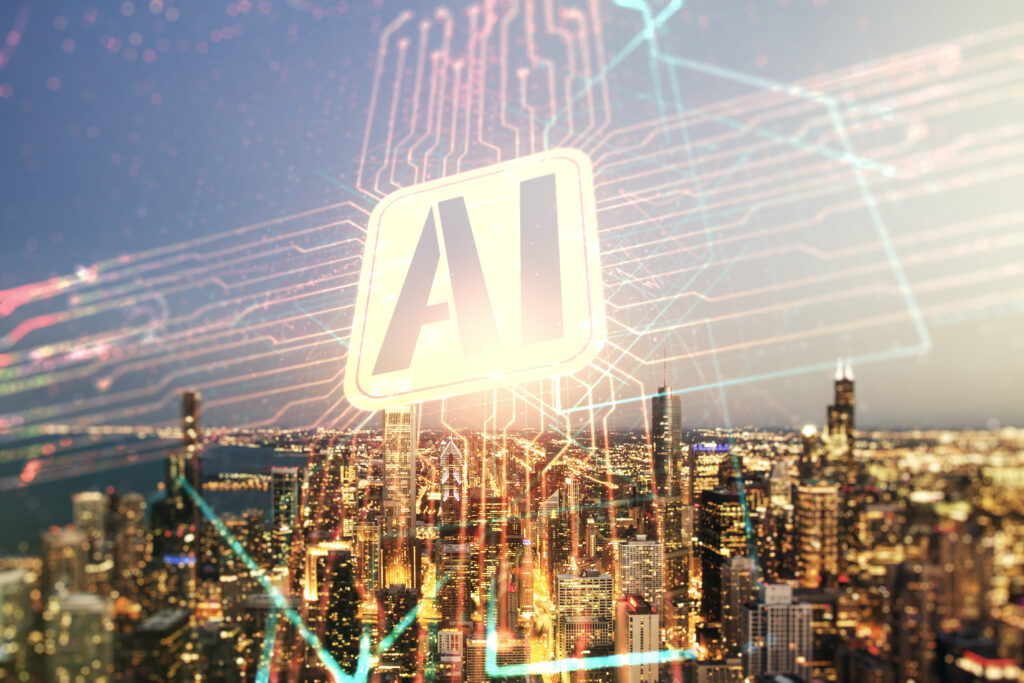Why hyperscalers are investing hundreds of billions in AI infrastructure—and why this isn’t a bubble
In the sweep of all things artificial intelligence (AI) and attendant AI infrastructure investments, the goal, generally speaking, is two-fold: incrementally leverage AI to deliver monetizable, near-term capabilities that deliver clear value to consumers and enterprises, while simultaneously chipping away at achieving artificial general intelligence (AGI), an ill-defined set of capabilities that could arguably bring consequences that the world, collectively, may not be ready for. The two complementary paths demand massive capital investment in AI infrastructure—both digital and physical.
OpenAI CEO Sam Altman posted a blog over the weekend that reiterated the company’s unequivocal commitment to “ensure that AGI…benefits all of humanity.” In exploring the path to AGI, Altman delineated “three observations about the economics of AI”:
- “The intelligence of an AI model roughly equals the log of the resources used to train and run it.”
- “The cost to use a given level of AI falls about 10x every 12 months, and lower prices lead to much more use.” More here on Jevons’ paradox.
- And “The socioeconomic value of linearly increasing intelligence is super-exponential in nature. A consequence of this is that we see no reason for exponentially increasing investment to stop in the near future.”
Here Altman is essentially highlighting the AI scaling law—bigger datasets create bigger models, necessitating greater investment in AI infrastructure. This makes the case for companies and countries to continue spending hundreds of billions—if not trillions—on AI capabilities that, in turn, deliver outsized returns
Given that four of the biggest companies in the game reported 2025 capex guidance in the past few weeks, we can put a number to planned AI infrastructure investment. For the purposes of this analysis, we’ll limit capex guidance to Alphabet (Google), Amazon, Meta and Microsoft. In the coming year, Amazon plans to spend $100 billion, Alphabet guided for $75 billion, Meta plans to invest between $60 billion and $65 billion, and Microsoft expects to lay out $80 billion. Between just four U.S. tech giants, that’s $315 billion earmarked for AI infrastructure in 2025. And this doesn’t include massive investments coming out of China or the OpenAI-led Project Stargate which is committing to $500 billion over five years.
The animating concept here is that the rate of growth in economic productivity that the AI revolution could deliver has historical parallels. While these numbers are hard to peg, if the change in the rate of growth of economic productivity after the Agricultural Revolution and after the Industrial Revolution are instructive, a successful AI revolution could lead to incredibly rapid economic growth. The level of AI investment today suggests that industry leaders expect a historic leap in economic productivity. But how much growth is possible? Here, history provides clues.
In his 2014 book Superintelligence, philosopher Nick Bostrom draws on a range of data to sketch out these revolutionary step changes in the rate of growth of economic productivity. In pre-history, he wrote, “growth was so slow that it took on the order of one million years for human productive capacity to increase sufficiently to sustain an additional 1 million individuals living at subsistence level.” After the Agricultural Revolution, around 5000 BCE, “the rate of growth had increased to the point where the same amount of growth took just two centuries. Today, following the Industrial Revolution, the world economy grows on average by that amount every 90 minutes.”
Drawing on modeling from economist Robin Hanson, economic and population data suggests the “world economy doubling time” was 224,000 years for early hunter gatherers. “For farming society, 909 years; and for industrial society, 6.3 years…If another such transition to a different growth mode were to occur, and it were of similar magnitude to the previous two, it would result in a new growth regime in which the world economy would double in size about every two weeks.” While such a scenario seems fantastical—and is constrained by AI infrastructure and power supply—even a fraction of that growth rate would be transformative beyond comprehension.
Given the planned investments from hyperscalers, it’s clear that they buy the narrative and see the ROIC. This also runs contrary to the emerging discourse that we’re currently in an AI infrastructure investment bubble that will invariably burst leaving someone to hold the bag. To wit: unlike past speculative bubbles, AI infrastructure spending is directly tied to scaling laws and immediate enterprise demand and adoption, much like cloud computing investments in the 2010s that ultimately proved prescient.
Back to Altman: “Ensuring that the benefits of AGI are broadly distributed is critical. The historical impact of technological progress suggests that most of the metrics we care about (health outcomes, economic prosperity, etc.) get better on average and over the long-term, but increasing equality does not seem technologically determined and getting this right may require new ideas.”
Final thought: The scale of investment signals that major players aren’t just chasing a speculative future—they’re betting on AI as the next fundamental driver of economic revolution.

